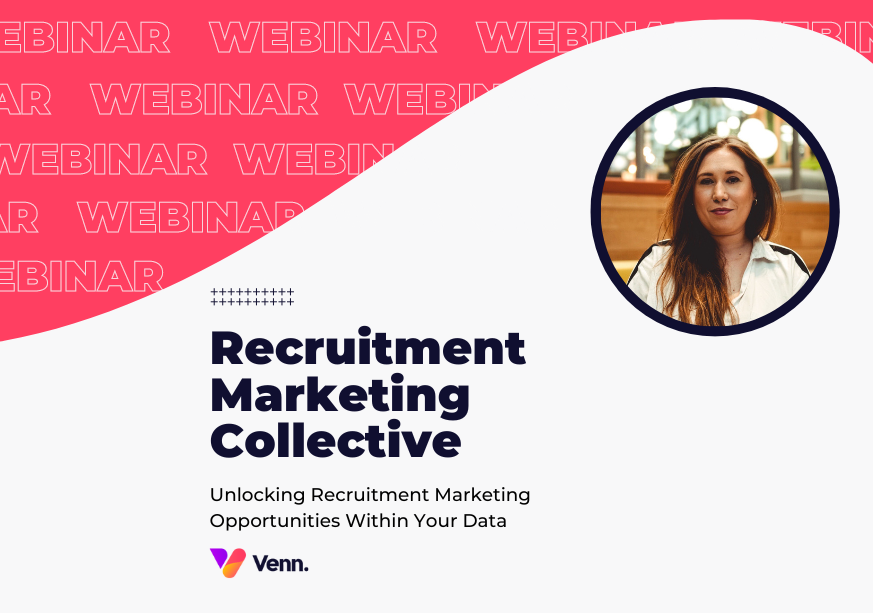Explore our NEW Knowledge Base and Help Desk to find everything you need to attract, engage and convert talent with your Vennture website.
Discover MoreAmplify Your Email Marketing for B2B Lead Generation
17 Jul, 20238 minutes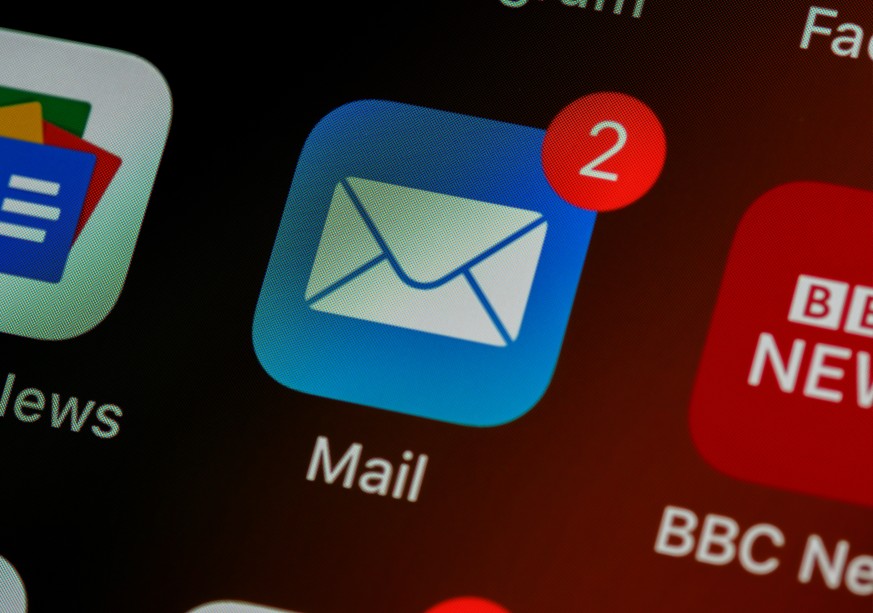
Email marketing remains an unmatched method with its ability to engage, persuade, and captivate in the noisy world of recruitment. With client attraction high on every marketer’s agenda in 2023, we are here to help. In a recent Recruitment Marketing Collective webinar, we explored elements of email and how marketers can harness quick wins to improve the effectiveness of their campaigns and email marketing strategy.
To summarise what was discussed during the event, this blog will expand on some of the topics covered. Whether you're a seasoned marketing manager or just starting to dip your toes into the vast ocean of email for lead generation, this guide is here to unlock the untapped potential of your email campaigns.
What is email marketing in recruitment?
Marketers have a small window in which to make an impact. On average, Litmus found that people only spend 9 seconds looking at an email, so what you write needs to make them stop and pay attention. In this fast-paced world, your clients move quickly, so what you put out there needs to be compelling, to the point, with an irresistible call to action.
Email marketing in recruitment can come in a variety of forms. Broadly split into candidate communications and client-targeted campaigns. Email is used to alert candidates of new jobs, showcase service offerings to existing and new customers and start conversations with people that may be interested in working with your brand. Email marketing can mean many things, but today we’re going to focus on email for B2B client lead generation.
The email marketing funnel
We talk a lot about producing content for each marketing funnel stage, but how does this methodology transfer to email?
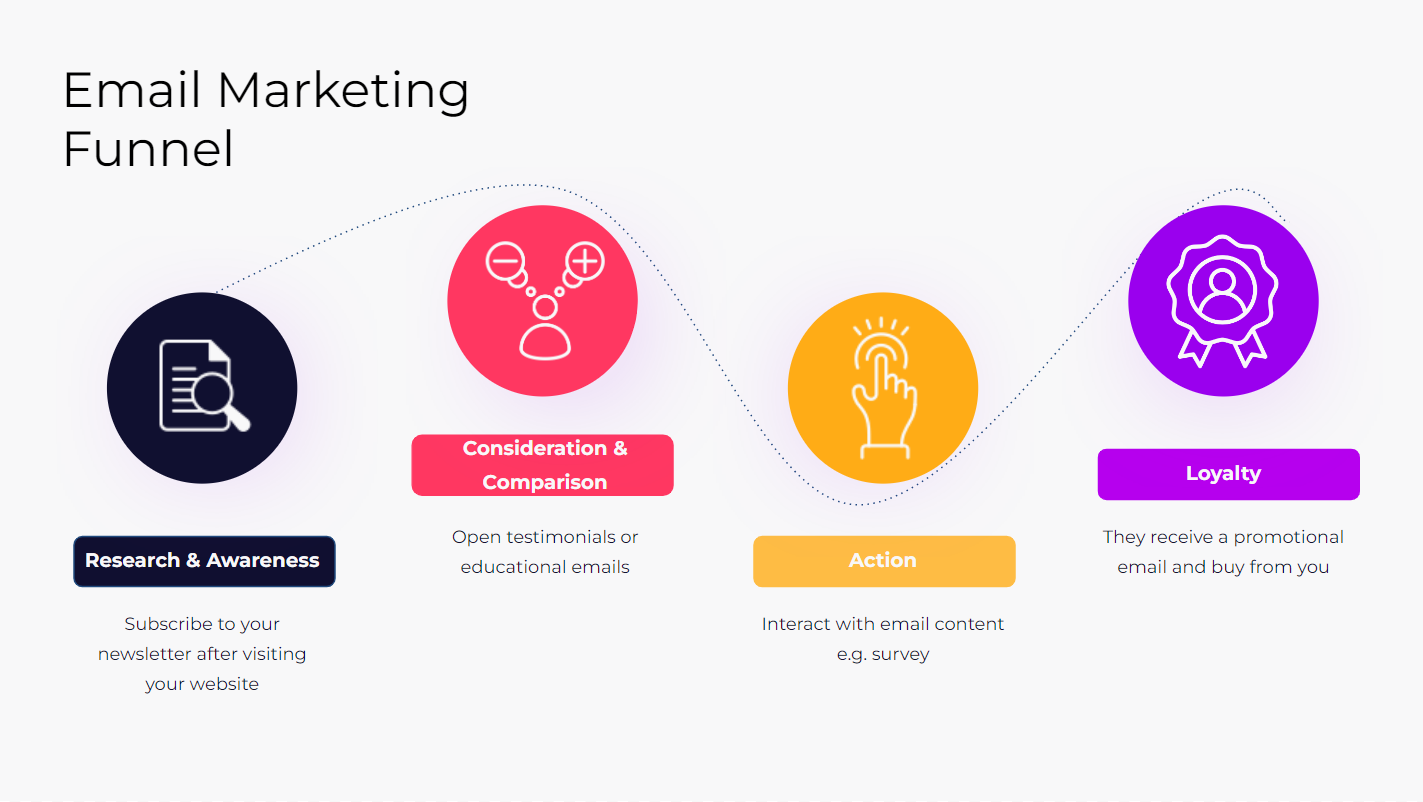
Effective email marketing relies on you having something valuable to say. To do this, you need to know exactly who you’re talking to and where they are in their ‘buying journey’. Think about:
- What do you want your readers to do after opening your email?
- How will your offer benefit them?
Start by exploring the needs of potential customers at every stage of this journey and the factors that directly or indirectly motivate or restrict their progress. Start right at the beginning, when the client becomes problem-aware and then moves through an intricate process of further awareness, consideration, comparison and decision-making.
To determine your customers' buying process, you'll want to pull data from all relevant sources. These could be prospecting tools, your website, behaviour analytics tools, or reviews. These will accurately chart your customers’ path from first to last contact. With this information, you can dive deeper to consider the emotions driving potential clients, the actions you can encourage them to take, and the solutions you offer to improve their pains and challenges.
Once you know your personas, you need to define your goal for each stage and the value proposition for each email. Consider the following:
At the top of the funnel, what are you doing to capture emails in the first place? We call these MQLs, and they can be gained through gated content, webinar sign-ups, and more. Without investing in the expansion of your email list, you won’t have fresh, warm contacts to engage with. During this first stage, it’s essential to provide value to the user and give them a good reason to share their information with your business.
In context, during the problem-awareness stage, a hiring manager is aware of the hiring need and the first step is usually to start researching a job spec. As a solution, you could provide them with a best practice job spec template to ease their pain or a salary survey for related jobs in their area to support their initial research, making you a trusted brand in their eyes as they begin their journey.
Then through consideration & comparison, your audience will start to think about taking action and consider what makes your brand and service different. Here you should be producing content that will encourage action and instil loyalty.
For most of you reading this, your focus will likely be on nurturing leads generated from sales or re-engaging with lapsed clients and encouraging loyalty. This means you should spend more time creating content for this stage over the research and awareness. After all, it is easier to re-engage with older contacts than gain new ones.
Throughout each stage of the funnel, you must keep your audience's personas in mind. Who have you got on your list? Which stage are they at? What information do they need?
Email optimisation and A/B testing
Sending the same emails week after week, without exploring what’s working and what’s not, isn’t going to give you the result you’re after. Testing and learning from your data is the first step to achieving better results. In fact, studies found that A/B testing and spam testing emails can increase ROI by up to 28%.
What should you be testing?
As a general rule, depending on what you’re trying to improve, you can implement effective changes in a few places.
Want to improve open rates?
- A/B test different subject lines
- Explore different days & times for sending
Bad click-through rate?
- Switch from long-form to short-form content
- Make CTA clear and prominent
- Check your emails are optimised for mobile devices and tablets
Not generating any SQLs?
- Address your mix of content. Is it in a logical order? Does it address different stages of the funnel? Are you offering your services as a solution?
How to design a winning subject line
Once you have your plan, you’re ready to define your email! Starting with a catchy subject line and preview text. Your subject line and preview text are the first things your readers will see in their inboxes, so they need to be relevant. They should capture your persona's attention, curiosity, and interest to entice them to open your email.
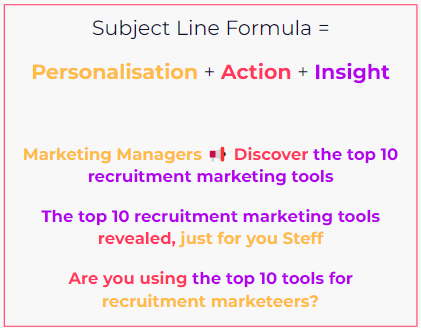
You can use creativity and humour if that’s right for your brand but don't sacrifice clarity or honesty. Avoid clickbaity or misleading words, and make sure your subject line and preview text match your email content and goal.
Personalisation doesn’t have to just be a name. You can use your recipient's location, job title, or other relevant data to make your subject line more appealing. You can also segment your email list based on different criteria. Personalised emails aim to make the reader feel the email was just written just for them, to solve their specific problem and make their life better.
A good rule of thumb is to keep your subject line between six and ten words, or less than 50 characters.
Your subject line should match the content and purpose of your email and not mislead or disappoint your readers. You should also highlight the value and benefits to your readers and not just focus on selling or promoting.
You have to provide helpful information, tips, solutions, or products that solve their problems, meet their needs, or pique their curiosity. If you struggle to come up with creative subject lines, you can use ChatGPT to help. Remember, email marketing is a good image, ten words and a button. That’s it.

Segmentation made simple
Good segmentation is simple but effective. Don’t overcomplicate it. To get started, consider your current customer base, prospects, and how active these contacts are.
To get started, use the following framework.
Starting Framework:
- Brand Advocates - repeat customers
- Prospects - spend infrequently / low spenders
- Lapsing / Lapsed - disengaging with you
From here:
- What are they struggling with?
- How are we solving their problems?
- Inspire curiosity & inspire action
Best practice email layouts
There’s a methodology behind the perfect email. With an understanding of design principles, psychology, and strategy, you can build an eye-catching template that follows best practices. The graphic below shows a simple structure to get you started.
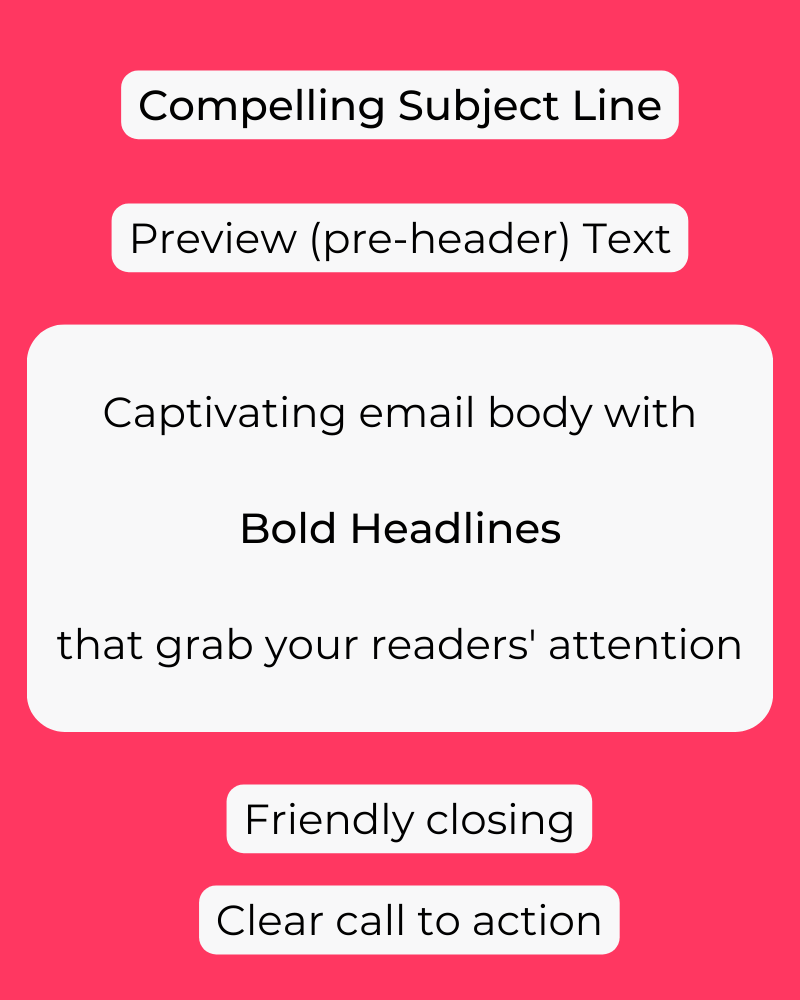
Captivating opening lines
Opening lines should establish rapport and credibility while demonstrating that you understand the reader’s situation and needs. To write a buyer persona-based opening line, consider referring to something specific about them or their company. Compliment them on a recent achievement or milestone, mentioning a common connection or referral, expressing empathy for their pain point or goal, and explaining why you're reaching out.
Provide value and proof
The main body of your email should provide value and proof to your audience. Value is what you can offer to help them solve their problem or achieve their goal, while proof is what validates your offer and shows that you can deliver results.
To tailor the value and proof section to your audience's needs, interests, and objections, highlight the benefits and outcomes of your offer rather than features. Include stories, testimonials, or case studies to demonstrate success. Additionally, address potential objections or questions that they might have and use bullet points, numbers, or bold text to emphasise key points. Make sure to keep it concise and clear.
Include a call to action
The call to action is your email's final and most important part, as it tells your recipients what you want them to do next. To make it effective, use clear and compelling language that is targeted for the unique buyer persona.
Create a sense of urgency or scarcity while reducing friction and risk. Action verbs and direct vocabulary should be used to suggest one clear and easy next step. Provide an incentive or a deadline to act now, such as a bonus or reminder. Include a link, button, or phone number to make the recipient's response easy.
Tracking email marketing performance
We’ve all done it. You’ve just sent a campaign, then sit on the dashboard, refreshing the page to see how many people have clicked that link!
Tracking the performance of your emails is critical for optimisation as it shows you areas that need attention, topics that perform well and audience trends. This data can then be utilised to further optimise your campaigns.
Here are six metrics you should be measuring and why:
1. Open rate
What is it:
The percentage of email recipients who clicked on one or more links contained in a given email.
Why is it important:
Open rates help you compare performance based on different variables, such as send time or segmentation, allowing for future optimisation.
How to calculate it:
Total Opens OR Unique Opens / Number of Delivered Emails x 100
2. Click through rates
What is it:
The percentage of email recipients who clicked on one or more links contained in a given email.
Why is it important:
Click-through rate gives you insight into how many people in your database engage with your content and are interested in learning more.
How to calculate it:
Total Clicks OR Unique Clicks / Number of Delivered Emails x 100
3. Conversion rate
What is it:
The percentage of email recipients who clicked on a link within an email and completed a desired action, such as filling out a lead generation form or purchasing a product.
Why is it important:
Conversion rates are incredibly important if you’re focusing on lead generation. They help gauge your email's success and track return on investment.
How to calculate it:
Number of People Who Completed The Desired Action / Number of Total Emails Delivered x 100
4. Bounce rate
What is it:
The percentage of your total emails sent that could not be successfully delivered to the recipient’s inbox.
Why is it important:
Bounce rates may not directly link to your goals but are worth keeping an eye on. Having too many hard bounces can make your company look like a spammer.
How to calculate it:
Total Number of Bounced Emails / Number of Emails Sent x 100
5. Email sharing/forwarding
What is it:
The percentage of email recipients who clicked on a “share this” button to post email content to a social network and/or who clicked on a “forward to a friend” button.
Why is it important:
Sharing rates can indicate which content performs best, helping you to plan future campaigns, content and emails.
How to calculate it:
Number of Clicks on a Share or Forward Button / Number of Total Delivered Emails x 100
6. Unsubscribe rate
What is it: The percentage of recipients that unsubscribe from your send list after receiving an email. Why is it important: The information may help you identify if your content is well-suited to your audience or if perhaps you’re sending too many emails, resulting in a loss of subscribers All of these metrics should be accessible within your marketing tools and data dashboards.
Five types of email templates you NEED
To save you time and make email campaigns easier to fire out, there are a few essential templates we recommend having in your back pocket. These templates cover a variety of touchpoints within the buyer journey to help you build out an email marketing funnel with your content.
Some of the following examples are from our own clients. Others are from reallygoodemails.com, a site we would highly recommend checking out for more email inspiration.
1. Welcome email
A welcome email is a valuable addition to your email journey. This email can be used when a new contact enters the database/buyer journey. This could be through downloading something on your website, signing up for an event, or requesting to join your mailing list.
No matter what the route to entry, the experience can remain the same, making your life easier. This will be their first interaction with your brand after the initial action, so it needs to make an impact.
In the main body, include insight into who you are as a business, and what you can offer, but keep it brief. When creating content for your welcome email, design a message that you would want to stop someone in the street and say directly to them.
Don’t go in with an aggressive sales email; you wouldn’t say this to their face, so don’t do it over email. Go in with a conversation starter and something that can help you gain more information on their challenges and pain points. Make it visually pleasing, not too much text, and keep it top-level and punchy!
You can decide when you would send this, perhaps you could use automation so a certain action can trigger the email to send. You can also set up a delay to control when they receive the email, whether that be hours or days after the initial interaction.
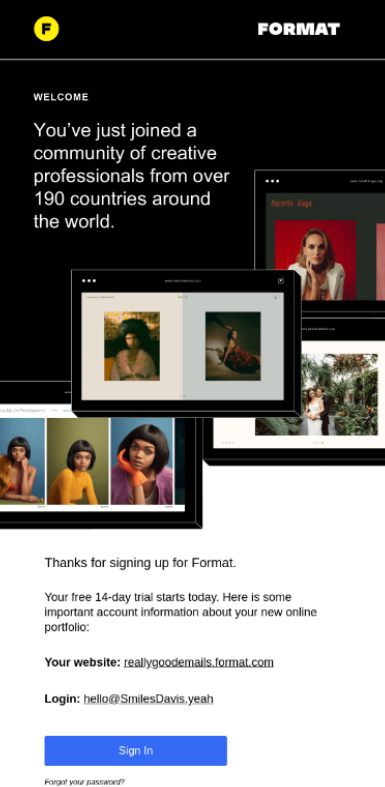
2. Value add content
At this point you may have weeded out the contacts that aren’t engaging through an automation journey; therefore, you know who is interested and engaging with your content. Value add content is about giving something back to your audience, giving them a reason to follow your brand.
These emails offer a piece of content that is relevant to the reader, their sector, and their pain points. This is not an opportunity to share generic blogs and insight, utilise this space to engage and add your perspective to a highly relevant topic or trend. Make sure you research trending topics within your sector or specialism. People are more likely to read something about an urgent challenge that directly impacts them. This is the proof you need to showcase yourself as an expert and thought leader in your specific area of recruitment.
After an enticing preview, feature a clear call to action, and don’t put everything in the email. Give them a taste and pique their interest, then track who is clicking on the link.
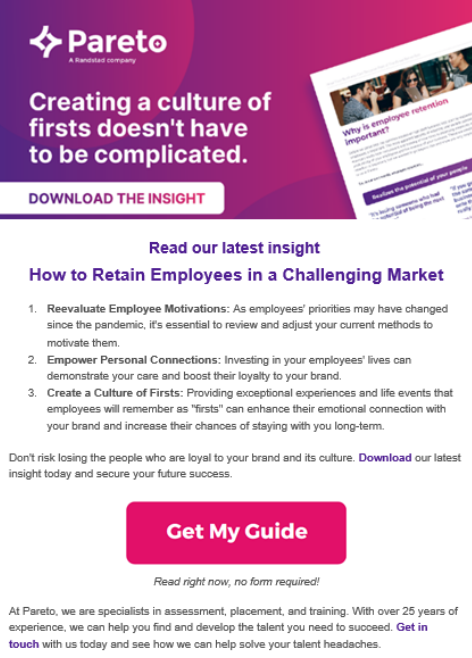
3. Case study
Are you claiming to be an expert in your field? Prove it! Case study emails offer a perfect opportunity to showcase a client’s success story, further backing your position in your market.
Build a template that showcases headline stats without bogging the reader down in detail. Focus on the benefits and real-world impact you had on the business to provide a relatable example for potential customers.
Like the previous template, ensure you have a really clear call to action. You can even feature service reminders underneath the main body as additional links, to keep your services top of mind.
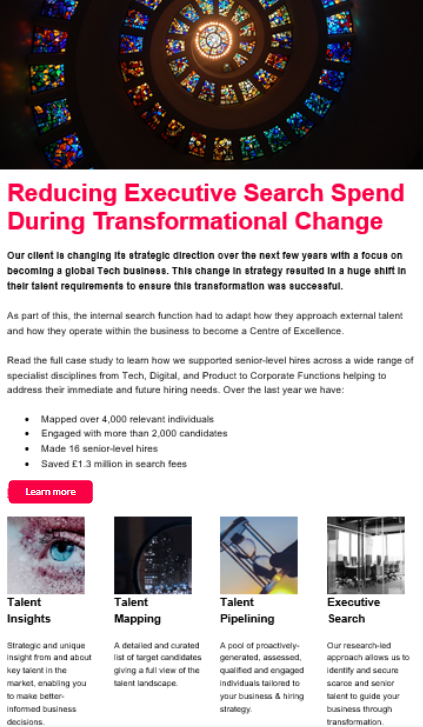
4. Service overview
Keep this one super simple. Readers don’t need war and peace on your entire business offering. They just need a reminder of how you can fit into their business to offer a solution.
This example can be used to re-engage with those that may have dropped off the radar. Perhaps your services have changed, if so, this is an opportunity to inform older contacts of your new proposition.
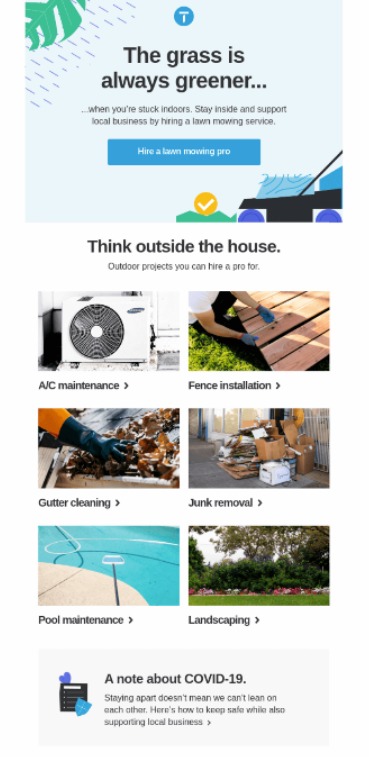
5. Re-engagement
Every database has an archive of older contacts that have maybe worked with you in the past, but their activity has dropped. Re-engagement emails should be utilised to remind these contacts of your business USPs and benefits.
Even if their engagement is low, they may have a business need arise that requires your special skills. Getting your pitch in front of them in a clear, concise email is an easy way to re-ignite conversations.
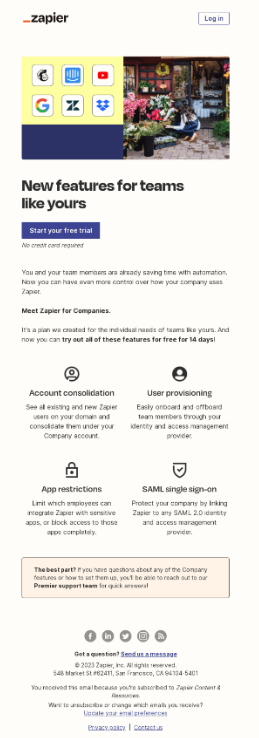
Need help with your email marketing?
We know that client attraction is high on every agency’s agenda. Whether you’re a marketing manager in need of strategic email marketing services, or a business owner looking for a marketing partner to handle your day-to-day campaigns, we can help.
We’re all about helping our community and sharing knowledge as much as we can to help agencies improve client lead generation and marketing ROI; we recently hosted a webinar series breaking down all the elements of a successful strategy. You can watch all the past events via our YouTube channel and sign up for our upcoming sessions here.



